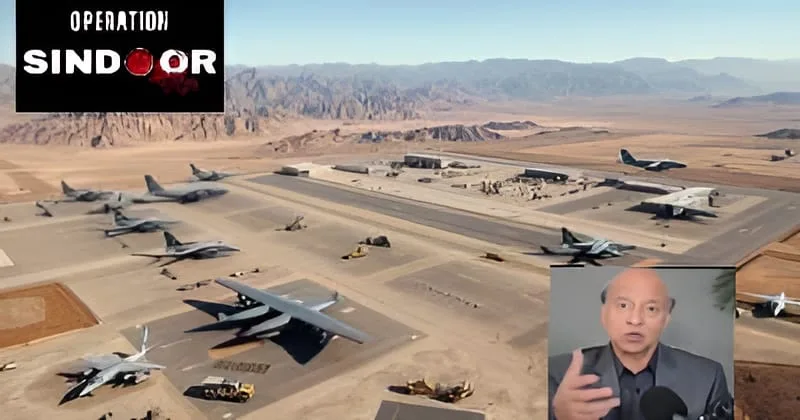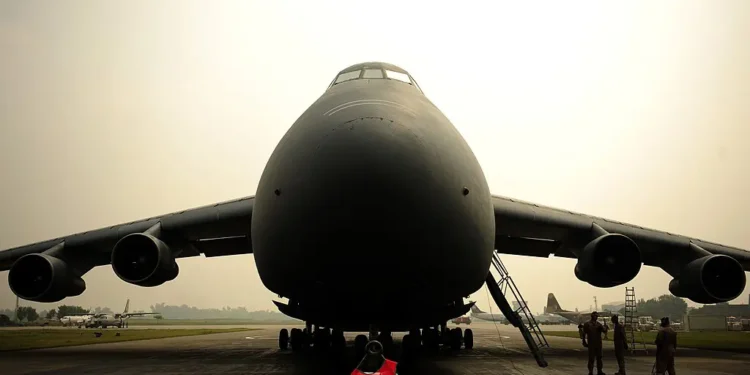In a striking development that has captured global attention, Pakistani security experts have alleged that the strategically crucial Nur Khan Airbase operates under significant American influence—a revelation that casts new light on the complex geopolitics of South Asia. This claim gains added weight in the wake of India’s meticulously executed Operation Sindoor, which inflicted considerable damage on the base, exposing vulnerabilities not only within Pakistan’s military infrastructure but also in the broader regional power dynamics. As these revelations unfold, they compel analysts and policymakers worldwide to reexamine the intertwined interests and covert alliances shaping security and sovereignty in this volatile region.
Table of Contents
Recent revelations by Pakistani security experts and multiple media reports have drawn renewed attention to the status of Nur Khan Airbase—one of Pakistan’s most vital military installations near Islamabad. Allegations have surfaced that this base is under significant operational influence or control by the United States, with Pakistani military officers reportedly restricted from access to certain sections. This news emerges amidst the backdrop of India’s meticulously planned and executed Operation Sindoor, which stunned Pakistan, the region, and global observers with its precision and speed.

While these claims have not been officially confirmed by Pakistani or American authorities, the consistency of expert commentary and investigative reports suggests a deeper and complex reality regarding the base’s operational control and geopolitical significance.
Understanding the Allegations and Their Source
Several Pakistani defense analysts and security experts have publicly alleged that the U.S. maintains a strong presence at Nur Khan Airbase, controlling key operations and even limiting access to Pakistan’s own army officials. Among them, Imtiaz Gul—a respected Pakistani security analyst—has described the base as functioning effectively as an American fortress. Gul asserts that the U.S. has maintained operational access since 2001, initially supporting logistics for the Afghan war and drone operations.
These statements align with longstanding rumors that have now been reinforced by satellite imagery and reports of substantial damage to Nur Khan during Operation Sindoor. India’s Armed Forces have presented evidence showing approximately 20% degradation of Pakistan’s air force infrastructure at the base, with damage spanning around 7,000 square feet near critical strike sites.
The base’s strategic importance is underscored by its proximity to Pakistan’s nuclear command center, army headquarters, and other critical defense infrastructure. Nur Khan also hosts Turkish Bayraktar TB2 drones and serves as the nerve center for Pakistan’s Air Mobility Command.
It is important to clarify that these assertions come primarily from independent experts and media investigations, rather than formal government disclosures. As such, they should be viewed as serious allegations that warrant further scrutiny rather than established facts.
India’s Operation Sindoor: The Context That Shook Pakistan and the World
Operation Sindoor, conducted by India with remarkable precision, targeted crucial Pakistan Air Force assets, dealing a significant blow within a matter of hours. The success of this operation not only demonstrated India’s advancing military capabilities but also raised questions internationally about the integrity and control of Pakistan’s air defense systems.
Indian strikes exposed critical gaps in Pakistan’s air defense, including its inability to intercept ballistic missiles that targeted high-value sites deep within Pakistan. Satellite imagery and expert assessments confirm extensive damage, with rubble and debris visible at multiple affected bases. Despite Pakistan’s official efforts to downplay the extent of damage, reports from Pakistani senators and media corroborate the severity.
In light of reports on U.S. involvement at Nur Khan Airbase, it is reasonable to infer that India’s strike inadvertently exposed underlying vulnerabilities and foreign influences within Pakistan’s defense network. This development has left Pakistan’s military establishment visibly shaken and prompted observers worldwide, including in Washington, to reassess the dynamics at play in South Asia’s security environment.
Geopolitical and Strategic Implications
The prolonged U.S. operational presence at Nur Khan, as emphasized by Imtiaz Gul and echoed in multiple reports, speaks to a complex and covert dimension of Pakistan’s military cooperation with the West. Since 2001, the base has been utilized for American military logistics and drone operations linked to the Afghan war, reinforcing allegations that Pakistan has functioned as a strategic partner, sometimes controversially described as performing “the West’s dirty work” for decades.
The recent strikes thus symbolically and materially impacted not just Pakistan’s military infrastructure but also a significant American foothold in the region. This reality adds a layer of complexity to the ongoing India-Pakistan conflict, challenging official narratives and bringing to light hidden alliances and dependencies.
Furthermore, the silence or muted response from U.S. officials in the aftermath of Pakistan’s continued harboring of terror networks—contrasting sharply with previous hardline stances—may be linked to the strategic interests maintained through bases like Nur Khan.
Diplomatic and Security Sensitivities
Given the sensitive nature of these claims, it is essential to approach them with caution and diplomatic neutrality. While military collaboration between the U.S. and Pakistan is publicly acknowledged, direct operational control over Pakistani military facilities has never been officially admitted.
Presenting these allegations responsibly requires clear attribution to sources, avoiding unverified assertions, and acknowledging the absence of official confirmation. This balanced approach fosters respectful discourse while supporting informed discussion on matters of sovereignty, alliance, and regional stability.
Looking Ahead: Consequences and Considerations
If these reports accurately reflect reality, the implications for Pakistan’s sovereignty and regional security are profound. External influence within Pakistan’s military infrastructure could affect strategic decisions beyond the control of Pakistan’s own leadership.
For India, Operation Sindoor marks a significant milestone in its military evolution, demonstrating precision and strategic acumen that have shifted regional power calculations.
For global observers, the unfolding story underscores the intricate interplay of covert alliances, geopolitical interests, and military capabilities that shape South Asia’s security landscape.
Conclusion
Based on the available reports, expert commentary, and satellite evidence, it appears that Nur Khan Airbase’s situation involves multifaceted foreign influence and national security challenges. India’s rapid and decisive Operation Sindoor has brought these complexities to the forefront, exposing vulnerabilities in Pakistan’s defense framework and drawing global attention.
As the narrative evolves, it remains critical for media, policymakers, and analysts to engage with verified information, maintain diplomatic sensitivity, and prioritize peace and stability in South Asia.
Sources and Further Reading

















